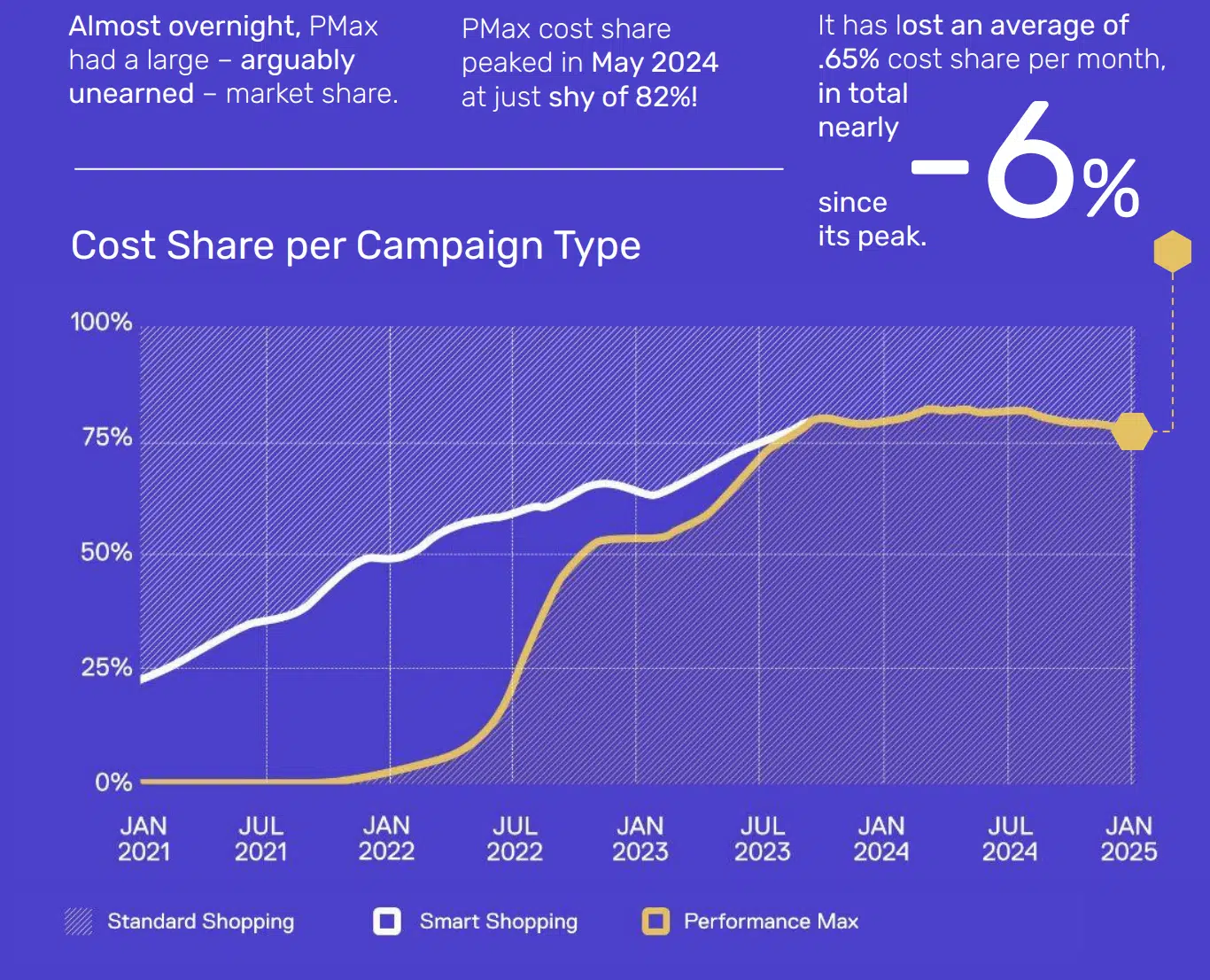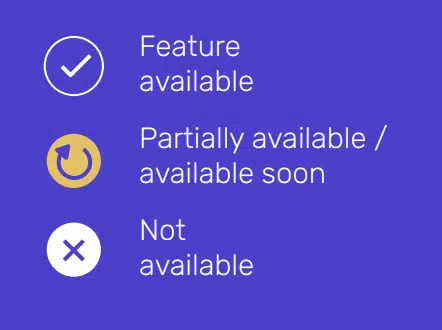Google Ads for ecommerce is a game of PMax, PMax, Pmax!: Report
The PMax evolution has dominated ecommerce ad spend (peaking at 82% last May) but faces some decline in its piece of the ecommerce pie.
Google’s Performance Max (PMax) campaign type has reached its third anniversary. It has evolved from what critics called “an experiment funded by advertisers” into a mature advertising solution that’s reshaping digital marketing across platforms, according to Mike Ryan, head of ecommerce insights at Smarter Ecommerce.
By the numbers. Here are some of the key findings from Smarter Ecommerce internal data:
- PMax cost share peaked at nearly 82% in May 2024.
- It has since declined about 0.65% per month, losing ~6% share since peak.
- 90% of PMax costs typically come from feed-based ads.
- PMax campaigns need at least 30 monthly conversions (ideally 60+) for optimal performance.

Cautious optimism. Is PMax’s recent decline in adoption a temporary setback or a signal of broader advertiser dissatisfaction? Based on recent feature additions, Ryan said he’s “cautiously optimistic” about the future of PMax.
State of play: Most advertisers maintain 3-7 PMax campaigns per account, with evidence showing that excessive segmentation can hurt performance. The data shows a strong preference for Maximize Conversion Value over Maximize Conversions bidding strategies.
Why we care. PMax campaigns represent a significant advertising evolution, leveraging AI to optimize ad placements across Google’s network, including Search, Display, YouTube, and more. Despite some recent decline in adoption, PMax continues to improve with added controls and features, making it a key tool for maximizing conversions and ROI across multiple platforms.
What’s next: Google might be increasing PMax’s feature parity with Standard Shopping to eventually deprecate the latter, continuing a pattern that already saw Dynamic Search Ads decline after PMax’s rollout, Ryan theorized.



What Google is saying. In response to this report, Google Ads Liaison Ginny Marvin clarified a few functionalities and updates people should be aware of on X:
Standard Shopping campaigns will continue to be supported, contrary to concerns about deprecation:
- “There are no plans to deprecate Standard Shopping. In fact, we’ve been adding features to Standard Shopping (for example, the profit optimization beta). The goal is to provide a consistent experience for advertisers who choose to use both campaign types.”
When products appear in both PMax and Standard Shopping campaigns, they compete based on Ad Rank, with the bid being a key factor:
- “When you have overlapping products in PMax & Standard Shopping, they compete on Ad Rank, which in this case considers the bid, as you’ve noted. But to clarify, that doesn’t mean you’re in effect bidding against yourself. It just means the campaign with the highest bid/target will be selected for the auction. It won’t “result in bid escalation.”
When ads from Performance Max and Demand Gen campaigns are eligible for the same placement, Ad Rank determines which is most relevant:
- “When ads from PMax & Demand Gen are both eligible to show, Ad Rank determines which ad is most relevant and selected for the auction. (The campaigns don’t bid against each other.) We’ve seen that these campaigns can complement each other. The key is to be clear about your goals for each campaign type.”
The big picture. Performance Max has fundamentally altered the digital advertising landscape, inspiring similar “black box” ad solutions across platforms from Microsoft, Meta, TikTok, Amazon, and Pinterest.
Bottom line. Despite critiques, Performance Max has established “black box” platform-managed campaigns as the future of digital marketing. As Ryan puts it: “Like it or not, I would argue we need to surf the wave, not fight the tide.”
Report methodology. Ryan analyzed over 4,000 PMax retail campaigns across 500+ advertiser accounts, finding that while some advertisers are pulling back, Google has significantly improved the platform by adding controls that were “unimaginable” back in 2022.
Dive deeper. Read the full study here.
Related stories
New on Search Engine Land